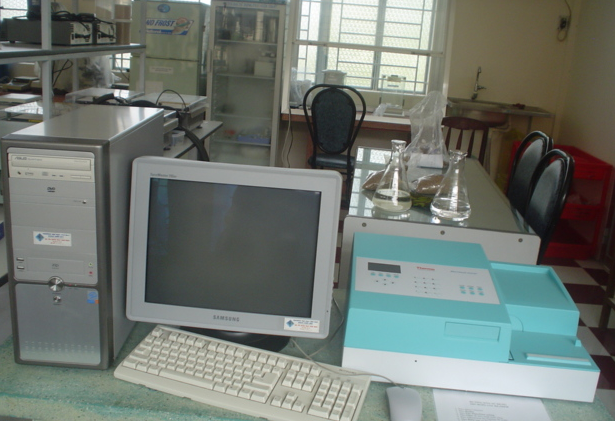I GENDERRESPONSIVE SERVICES FOR JUVENILE FEMALE OFFENDERS AND
I GENDERRESPONSIVE SERVICES FOR JUVENILE FEMALE OFFENDERS AND
A-132_Clean


I
Gender-Responsive
Services for Juvenile Female Offenders
and
At-Risk Young Women and Girls
A-132
1 of 4
ntroduction
An alarming increase in criminal behavior by young women and girls has made them a fast growing segment of the juvenile justice system. Juvenile female offenders must be held accountable for their behavior. However, the County of San Diego must also support a continuum of prevention, intervention, treatment, supervision, and ongoing care that is gender-responsive in order to maximize sound decision making and positive development for at-risk young women and girls. Programming will focus on girls’ unique psychological, social, and developmental needs.
Purpose
To clarify, facilitate, and enhance the County of San Diego’s commitment to preventing female juvenile delinquency and promoting positive development of at-risk girls. To improve the ability of the juvenile justice system and related County services to identify and address the specific and unique needs of at-risk girls and juvenile female offenders.
Definition of Gender-Responsive Services for Girls
Gender-responsive services for girls are those services whose content, delivery, and cultural orientation addresses the unique needs and characteristics of young women and girls. The goal of these services is to prevent or reduce female juvenile delinquency and promote positive development of at-risk girls. Services will encourage healthy attitudes, behaviors, and life styles, as well as promote responsible decision making and self-reliance.
Background
For young women and girls, the path to adulthood often features very different developmental experiences, challenges, and problems than those faced by young men and boys. Addressing and preventing female juvenile delinquency requires gender-responsive solutions.
In general, adolescent girls have a high incidence of physical, sexual, and emotional victimization, depression, and low self-esteem that are directly linked to at-risk behaviors. In San Diego County, female juvenile offenders are more likely than males to suffer from chronic substance abuse, have little or no parental control in their lives, and have poor school attendance and performance. Additionally, many juvenile female offenders are pregnant at the time of their incarceration, and many other at-risk girls become mothers at an early age.
A
Gender-Responsive
Services for Juvenile Female Offenders
and
At-Risk Young Women and Girls A-132
2 of 4
s the alarming increase in female juvenile
delinquency shows, there is an urgent need to address the challenges
facing at-risk young women and girls. Yet, despite the rapid increase
in criminal behavior by young women and girls, there are
comparatively few specialized programs and services designed to meet
their unique issues and needs. Appropriate attention to prevention,
intervention, treatment, supervision, and ongoing care of at-risk and
delinquent young women and girls has been lacking.
Too many young women and girls are falling prey to cycles of self-destructive behavior and crime that lead to broken lives and incarceration. If left unchanged, these cycles will rob our young women and girls of their futures, erode our citizens’ quality of life, and impose enormous costs on our justice, health, and social service systems. This Board Policy will enhance and guide the process of addressing both the immediate programmatic and long-term strategic needs of at-risk young women and girls.
Guiding Principles:
The psychosocial perspective and developmental needs of young women and girls are very different from those of young men and boys. Effective programming for at-risk girls and juvenile female offenders must address the unique characteristics and needs of young women and girls.
Effective service delivery for young women and girls requires providers with a comprehensive understanding of their psychosocial perspective and developmental needs. Programming and training should be gender responsive and reflect knowledge of the diverse backgrounds and issues of the young women and girls served.
Programming adapted to young women and girls’ developmental needs is more likely to result in positive outcomes, including healthy attitudes, behaviors and lifestyles, as well as responsible decision making and self-reliance.
Involvement with at least one significant positive adult, a positive peer group, core social institutions, and the community is critical in providing effective and lasting outcomes for young women and girls.
Wherever appropriate, families should continue to play the primary role in the development of young women and girls. Programs at all levels should provide services that include the family in addressing the problems that lead to delinquency. Services should involve the family in assessment, case management, service delivery, and ongoing care.
S
Gender-Responsive
Services for Juvenile Female Offenders
and
At-Risk Young Women and Girls A-132
3 of 4
erious, chronic, and violent juvenile female
offenders must be held accountable for their behavior with swift and
certain sanctions.
Program and Policy Priorities
1. In 1999, the Working to Insure and Nurture Girls’ Success (WINGS) program was designed and implemented as a gender-responsive program for girls. The program is research-based and results driven, with measurable outcomes. In 2003, the WINGS program merged with the Community Assessment Teams to form the CAT/WINGS program. Since that time, the two programs have become synonymous and most often simply referred to as CAT.
2. Aggressive and sustained efforts to seek state, federal, and private foundation funding sources to augment County commitments are integral to the development and implementation of these services.
3. The CAT Program addresses family issues, and young women and girls’ experiences of physical, emotional, and sexual victimization. These issues contribute significantly to at-risk and delinquent behavior.
4. Physical and mental health assessment, intervention, and treatment are essential components of the CAT program.
5. School difficulties and negative attitudes toward school, as evidenced by anti-social behavior, failing grades, truancy, and dropping out, both reflect and contribute to at-risk behavior. Services for young women and girls that support academic performance and remove barriers to girls’ success in school are essential components of gender-responsive programming.
6. Services for young women and girls must include development of vocational skills promoting the capacity of young women to sustain independence and self-reliance. Services will include basic information about the work environment, professional behavior, and planning for the future.
7
Gender-Responsive
Services for Juvenile Female Offenders
and
At-Risk Young Women and Girls A-132
4 of 4
. An essential component of gender-responsive
service delivery is ensuring that at-risk young women and girls and
their families know what programs are available and how to utilize
neighborhood and core social institutions for future problem solving.
Gender-responsive programs must be part of an integrated and
accessible service delivery network.
8. Programming must help at-risk young women and girls and juvenile female offenders develop and strengthen personal support networks, including positive peer group and mentors, in order to foster positive behaviors and effective decision making skills.
9. The ultimate goal of gender-responsive programs, such as CAT, must be to engender self-reliance. Services for young women and girls must include information and counseling on basic life skills, such as personal finances, career goals and parenting, in order to assist their development into responsible, successful, and self-sufficient adults.
Sunset Date
This policy will be reviewed for continuance by 12-31-18.
CAO REFERENCE
Probation Office
Board Action
11-16-99
(1)
09-27-05 (1)
12-09-08 (33)
11-08-11 (2)
Tags: female offenders, juvenile female, female, services, juvenile, genderresponsive, offenders
- Ðïࡱáþÿ x92x94þÿÿÿx90¥áà пøbjbjóòóò 4x88±¸±¸¯(ÿÿÿÿÿÿ· x98x98x98x98x98ÿÿÿÿ¬¬¬8ä¬mvð\\777òuôuôuôuôuôuôuy²ï[®øux98ª77ªªøux98x98\û V¼!¼!¼!ªrx98\x98òu¼!ªòu¼!¼!lx88zpÿÿÿÿàjþx82x94ó�
- PRESIDENTES DE LA COFRADÍA DE BURELA 19231931 DOMINGO GONZÁLEZ
- OPRETTELSE AF NY WEBBRUGER WEBINDTASTNING TIL DBCG UDFYLDES
- R EGISTRATION DATES 2019 ELECTORAL REGISTER MONTHLY NOTICE OF
- EL DESARROLLO DE LA CIENCIA DE TRADUCCIÓN CON RESPECTO
- THE PRINTMAKERS ART DIGITAL OR ORIGINAL PRINTS REPRODUCTIONS OR
- COLEGIO OFICIAL DE ARQUITECTOS DE HUELVA SOLICITUD DE COLEGIACIÓN
- APRIL JOURNAL PROMPTS ENJOY WRITING IN YOUR JOURNAL ON
- POSTTRAINING FEEDBACK TITLE OF CLASSPROGRAM DATE OF TRAINING CLASSPROGRAM
- CMSJORDAN DRIVING SCHOOL INC 8420 UNIVERSITY EXECUTIVE PARK DRIVE
- CIVIC GOVERNMENT (SCOTLAND) ACT 1982 SECTION 43 WINDOW CLEANERS
- LETONIA 1 INTRODUCERE — PRINCIPALELE CARACTERISTICI ȘI CONTEXTUL CADRUL
- THE SLOPE SAFETY DIVISION OF THE GEOTECHNICAL ENGINEERING OFFICE
- APSTIPRINU VIESĪTES NOVADA PAŠVALDĪBAS IEPIRKUMU KOMISIJAS PRIEKŠSĒDĒTĀJA S PUZĀNE
- WWTP FACILITY NAME LOCATION STANDARD OPERATING PROCEDURE PH (HYDROGEN
- 23 MENTAL DISORDERS AND SUICIDAL BEHAVIOR RUNNING TITLE MENTAL
- THE WIRE “…AND ALL THE PIECES MATTER” FIVE YEARS
- 33 PROGRAMACIÓN DE PROCESOS BÁSICOS DE PASTELERIA Y REPOSTERÍA
- ZAŁĄCZNIK DO ROZPORZĄDZENIA MINISTRA ZDROWIA Z DNIA 11 CZERWCA
- NOTA DE PRENSA INDICE DE COMERCIO AL POR MENOR
- INFORMACIÓN SOBRE EL DESARROLLO DE LA JUNTA GENERAL ORDINARIA
- SUGERENCIAS PARA REPASAR LA BIBLIOGRAFÍA DE LOS PRÁCTICOS
- UDTAGET FRA KL’S HJEMMESIDE DEN JUNI 2008 OPRETTELSESDATO 11205
- CHURCH OF SAINT EULALIA PARISH PASTORAL COUNCIL (PPC)
- MINISTERIO DE DEFENSA INDICE GENERAL PRÓLOGO DEL SEÑOR MINISTRO
- PRECONCEPTION AND EARLY PREGNANCY DIET DO – EAT A
- {AGENCY NAME} OFFICE OF THE GENERAL COUNSEL PROPOSED RULE
- FRAME1 FRAME2 FRAME3 FRAME4 FRAME5 FRAME6 FRAME7 FRAME8 FRAME9
- PLANNED PARENTHOOD GULF COAST INC 4600 GULF FREEWAY HOUSTON
- 8B2 A 1 LAS CAJAS 2 LA LATA 3
CLAUSULA DE INVALIDEZ PERMANENTE Y DEFINITIVA DOS TERCIOS A
 MINISTERO DELLA PUBBLICA ISTRUZIONE ISTITUTO COMPRENSIVO STATALE SERINO PZZA
MINISTERO DELLA PUBBLICA ISTRUZIONE ISTITUTO COMPRENSIVO STATALE SERINO PZZAFUNCIONALISMO DE WIKIPEDIA LA ENCICLOPEDIA LIBRE SALTAR A
 LOM KOMMUNE SKILTVEDTEKTER MED HEIMEL I PLAN OG BYGNINGSLOV
LOM KOMMUNE SKILTVEDTEKTER MED HEIMEL I PLAN OG BYGNINGSLOV REGULAMIN KLUBU SPORTOWEGO „NEPTUN ŚWIDNICA” I UŻYTE W NINIEJSZYM
REGULAMIN KLUBU SPORTOWEGO „NEPTUN ŚWIDNICA” I UŻYTE W NINIEJSZYMNIGHTS TO REMEMBER – HEDLEY C G I SEE
PRZEDMIOT PODSTAWY PIELĘGNIARSTWA – PRAKTYKI ZAWODOWE WYMIAR GODZINOWY PRZEDMIOTU
 DỊCH VỤ PHÂN TÍCH MẪU Ở CÁC PHÒNG THÍ
DỊCH VỤ PHÂN TÍCH MẪU Ở CÁC PHÒNG THÍVERENIGINGSHANDBOEK BOWLINGVERENIGING [NAAM BOWLINGVERENIGING] VERENIGINGSHANDBOEK [NAAM BOWLINGVERENIGING] HET VERENIGINGSHANDBOEK
權責單位: 馬偕感染科 ■台北院區 ■淡水院區 ■兒童醫院 版次: 彙整者: 感染科巫映蓉醫師 制定日期:
 SENZORI U AUTO INDUSTRIJI I SISTEMI ZA DIJAGNOSTIKU WWWMATURSKIORG
SENZORI U AUTO INDUSTRIJI I SISTEMI ZA DIJAGNOSTIKU WWWMATURSKIORGSHREWSBURY YOUTH HOCKEY BOARD OF DIRECTORS MEETING TUESDAY NOVEMBER
27 DE OCTUBRE DEL AÑO 2005 CP SEÑOR MARC
VIERNES 11 DE MAYO DE 2018 DIARIO OFICIAL (PRIMERA
28022017 LASO BAEZA VICENTE EL INCUMPLIMIENTO OBLIGADO DE LA
NOTA INFORMATIVA ENVÍO DE MUESTRAS DE SUERO AL LABORATORIO
ZAŁĄCZNIK NR 2 DO ZARZĄDZENIA NR 115921 PREZYDENTA MIASTA
 Provincia de Buenos Aires Honorable Cámara de Diputados Proyecto
Provincia de Buenos Aires Honorable Cámara de Diputados Proyecto FORMULARIO 5 PROGRAMA DE APOYO A LA FORMACIÓN
FORMULARIO 5 PROGRAMA DE APOYO A LA FORMACIÓNANEXA NR 1 LA ORDINUL MINISTERULUI MEDIULUI NRDIN20 REGULAMENTUL